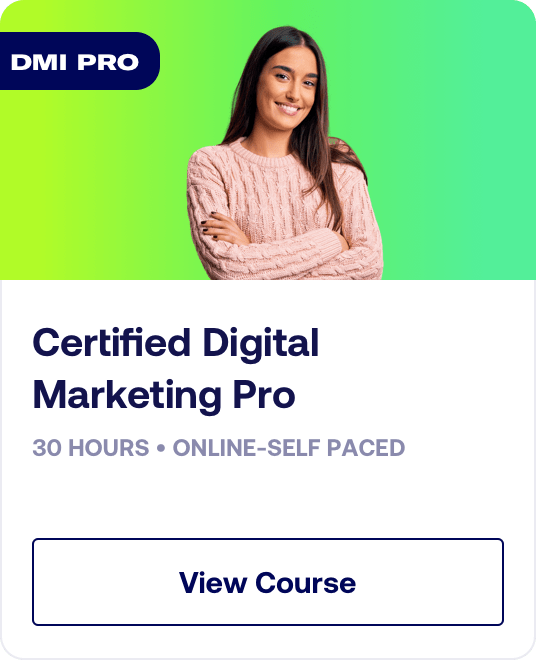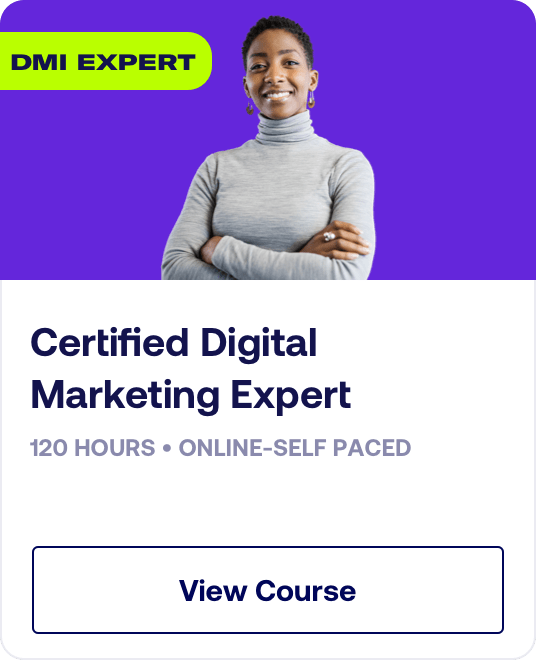Digital Marketing - Study Notes:
Key characteristics
Let’s look at the business model a little bit more holistically, as there’s a huge number of things we need to consider when getting the business model right.
- Key partners: Who do you team up with to deliver a solution? The list of potential partners for your business is massive. If you think just about getting your products, you’ve got your suppliers, getting your products to your customers, you’ve got freight forwarders, warehouse partners, couriers and marketing your products, you’ve got potential agencies, and across all of these you’ve got decisions to make about whether you want that resource to be internal in your business or partnering with external agencies. As I would say, there are a huge number of options there and getting the decisions right about which ones you work with will massively help you be successful and also maximize your efficiency.
- Key activities: What are the key things that you do? Again, running a business, there are so many different things that can take your time and resources, and one of the greatest challenges is choosing where to spend that time and also choosing which things not to do. Something I’ve always found very useful is having a really clear objective of what the business is trying to achieve and having a clear set of strategies to deliver that and then having a number of tactics to help deliver those strategies. And that will help you have a list of key things you’re going to do to help deliver the overall strategies and the overall objectives, and everything that isn’t on that list is best not done.
- Key resources: What are the critical assets and resources required?
- Value proposition: What is the overall product and service offering?
- Customer relationships: How do you build and maintain key customer relationships?
- Channels: What are the channels of choice that you use?
- Customer segments: Who are the key target audience?
- Cost structure: What are the costs (fixed and variable) that are associated with this?
- Revenue streams: What are the various ways to make money?
Types of e-commerce revenue models
That leads us nicely on to discussing revenue models and there are three main categories.
Individual sales
Individual sales are the ones that we’re all most familiar with and they cover a huge range of different e-commerce categories and this is basically where each time you’re looking for a good or service, you start your search, you find a website that delivers what you’re looking for and you go on to purchase.
Subscription businesses
Subscription businesses are really a new trend that’s becoming more and more popular for a number of reasons and are really disrupting a lot of the individual sales categories.
So a great example of this is Dollar Shave Club. This is traditionally a category that we bought on an individual basis, but the Dollar Shave Club sell an opportunity to sign people up over a longer period of time by using incredibly innovative marketing and high impact marketing and also a really good value proposition for the consumer. The real benefit of these subscription businesses is that they tend to tie customers in for a longer period of time and as a result will generate much higher revenue per customer acquired, and because they’re making more money from each customer, that gives them more money to recruit new customers. So again, it becomes a self-fulfilling process of recruiting more customers and keeping them for longer.
Pay-per-view
The third revenue generation is where people are visiting your site to consume your content and you can make money from those consumers again in a number of ways. The most typical way is by serving advertising on your site so when these visitors to your site are consuming your content, they’ll potentially click on that advertising, go through to a different person’s website, and buy products from them. And the more people you can get to your website, the more money you can generate, because people will either be rewarded on a cost-per-click basis, which is when someone actually clicks on the advert on your site, or on a cost-per-million or cost-per-thousand basis, which is the more people that come to your site, the more eyeballs see your adverts, and you make money for each one of those.
Freemium
There are a few different layers that kind of add complexity to these revenue generation models as well. So Freemium is a good example. This is where the initial offering is free but then additional goods and services are added on top that the customers ask to pay for. Again, a couple of good examples of this would be Dropbox, the software as a service where the user comes in and gets a certain amount of storage for free and then once they’ve seen the value of that, they are willing to pay extra to get more storage to make the service more valuable. Another example would be in-app purchases. Again, often the initial user experience and the initial game is free, but to get maximum value out of the product, the app will ask the customer to pay a small additional fee and by that time they’ve bought into the value of it and are willing to do so.
Blurring of distinctions
The other thing to note is that there’s quite a lot of blurring of the lines between these three different business models. So, for example, Amazon, again, does offer individual sales but it also offers a subscription model of Prime where you don’t get your goods as part of that subscription, but you do get your delivery taken care of. There’s also lots of clothing businesses that offer you the opportunity to either buy their product as a subscription where you get a regular delivery of the certain products. So say for example, there’s lots of sock subscription businesses, where you can get a new pair of socks each month and they offer that as a subscription or as a stand-alone purchase.
So it’s all about working out which of these either individual business models work best for you or working out how to blend them together to get the maximum amount of revenue per customer.
Back to TopGraeme Smeaton
Graeme Smeaton is the founder of Royal & Awesome. Along with a proven track record in defining and delivering marketing strategies that drive significant growth and create real shareholder value, Graeme is highly commercial. He has extensive experience managing PLs and other key financial statements, while being an operational board director of AFG Media Ltd, and has experience negotiating with suppliers, distributors and licensing partners.

By the end of this topic, you should be able to:
- Identify the impact of logistics, packaging, purchasing, distribution, and payment options for an e-commerce solution
- Evaluate e-commerce revenue models and the advantages associated with different e-commerce solutions
- Critically appraise the requirements for managing e-commerce customers in accordance with current laws and legal guidelines




